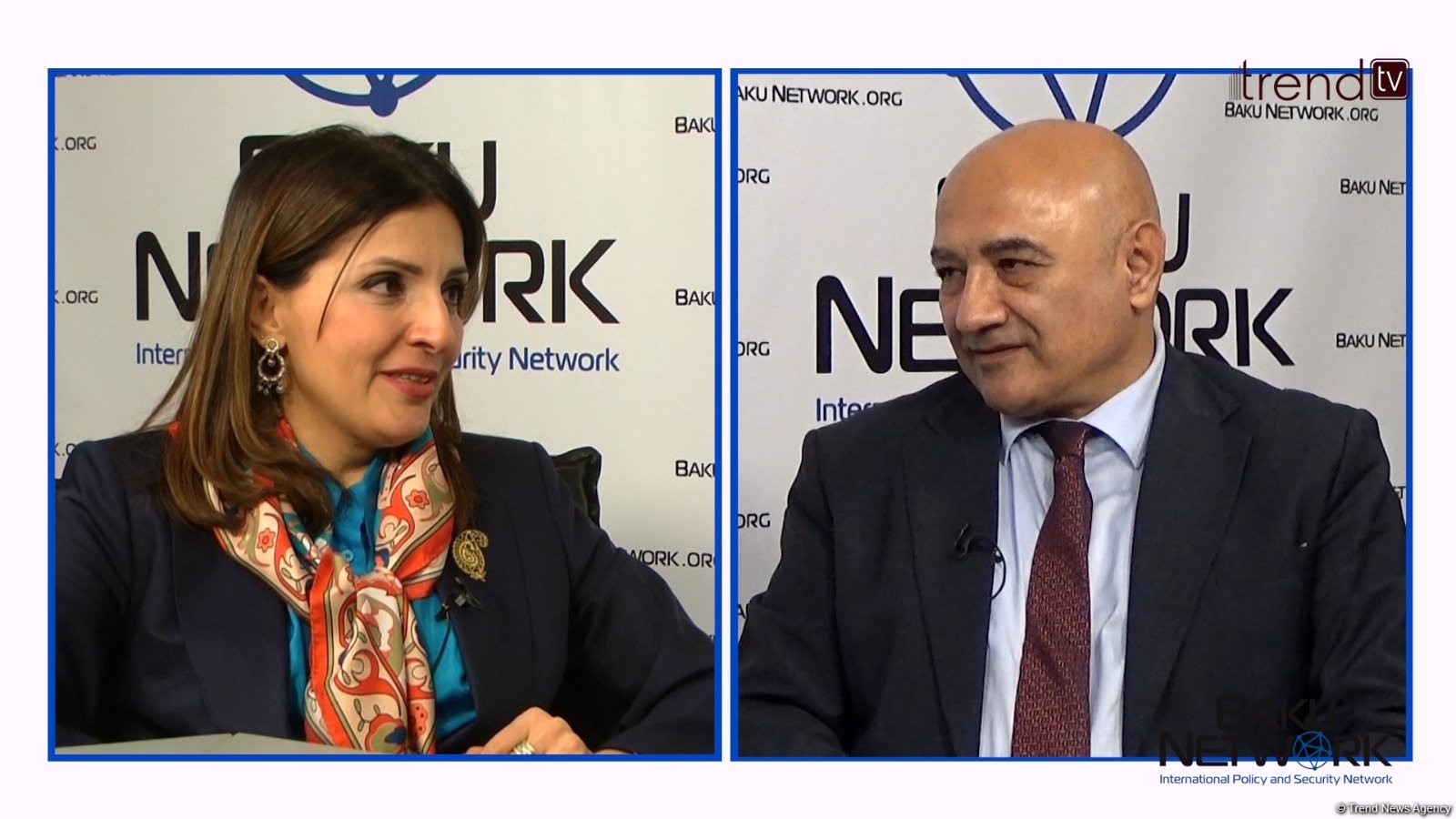
A fresh episode of the analytical video series "Dialogue with Tofiq Abbasov", hosted by the expert platform Baku Network, has just dropped.
The guest of this episode was Sabina Gadiyeva, an honored architect of Azerbaijan, Ph.D., professor, and head of the State Service for the Protection of Cultural Heritage under the Ministry of Culture of Azerbaijan.
In the conversation, Gadiyeva stressed that cultural heritage is a core part of national identity, requiring the attention of both experts and society at large. Quoting Victor Hugo, she said, "Every monument is the result of generations’ progress, reflecting the collective contribution of many." According to her, architectural monuments are the first things people notice—whether they’re locals or tourists—and preserving them is a key responsibility for any society.
Gadiyeva reminded the audience that Azerbaijan was denied access to a significant portion of its cultural heritage for 30 years due to the occupation of its territories. This period, she said, was a massive historical injustice. Most research during this time relied solely on archival materials, books, and online sources, which could never replace direct site monitoring and expert work on the ground.
She also highlighted the pressing issue of unauthorized restorations and attempts to appropriate Azerbaijan’s cultural heritage. Gadiyeva brought up the example of the Albanian monastery complex Khudavang, where restoration was carried out without regard for historical records, and Gandzasar, where interventions sparked criticism even among Armenian scholars. Azerbaijani experts, she said, were deliberately barred from these sites, preventing objective studies.
After regaining control of its territories, Azerbaijan immediately began assessing the state of its cultural heritage. In 2020, the first phase of monument analysis was conducted, followed by months of detailed monitoring in 2023. Official data shows that 705 cultural monuments have been registered in Karabakh, but 155 of them remain unaccounted for. Most of these are archaeological sites that may have been destroyed or repurposed.
The situation is further complicated by the heavy mining of these territories, which hinders access to historical monuments. Despite relentless efforts by demining agencies and security forces, the process of surveying and restoring these sites remains challenging and demands substantial resources.
Gadiyeva emphasized that the greatest damage was inflicted on Muslim monuments, many of which were plundered, desecrated, or outright demolished. In Shusha, the only "restored" structure was a mosque, but its restoration was deliberately done in a way that erased all traces of Azerbaijani heritage.
On Christian monuments, she noted that key sites like Khudavang and Gandzasar underwent restorations based on vague plans using modern materials, which stripped them of their historical authenticity. In some cases, restoration was reduced to "Euro-renovations," obliterating the original structure. Beyond physical destruction, ideological appropriation was also carried out through publications that rewrote the history of these monuments to claim them as non-Azerbaijani.
Speaking about Karabakh’s rich cultural heritage, Gadiyeva highlighted its unique archaeological significance, encompassing various historical periods. She referenced the Azykh Cave, one of the oldest known human settlements, where the jawbone of the Azykhantropus—named after the site—was discovered. This groundbreaking find by Azerbaijani scientists underscores the region's deep historical ties to Azerbaijan.
Despite countless challenges, Azerbaijan is actively restoring its historical monuments. The restoration of the Panah Ali Khan Complex has been completed, and plans are underway to revive other architectural landmarks, including the mosque in Goch Ahmadli village, which will play a central role in the region’s cultural revival, especially as resettlement begins.
In closing, Sabina Gadiyeva underscored that the mission is not just about rebuilding what’s been destroyed but also about preserving and passing down cultural heritage to future generations. "Historical monuments aren’t just buildings—they’re living witnesses of the past that must be safeguarded against destruction and appropriation."
